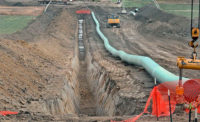Concern is growing over a recently released “sample” ordinance for high-performance buildings from the Portland Cement Association. “High Performance Building Requirements for Sustainability,” which adds to and amends the International Building Code, was developed outside the standard consensus process and is biased toward concrete, say sources.
“Wholesale changes” to scope and requirements of the IBC outside of the established consensus process are not supported by the American Institute of Architects’ policy on the development and promulgation of codes and standards, says the AIA.
The majority of IBC modifications in the document have been fully vetted in the national model code development process and never implemented, says Ron Burton, a vice president of the Building Owners and Managers Association. BOMA does not support the document, which it calls “biased.”
PCA’s document, released July 21, was prepared by three PCA employees and a sustainability consultant. PCA took input from building officials, consultants and the concrete and masonry sectors. The document is available at www.cement.org.
Going beyond the IBC, the document addresses durability and disaster resistance. It increases design wind pressure and design force by 20% for most buildings. Flood resistance is increased to at least 3 ft above base flood elevation, and the document does not permit consideration of dams, levees and other flood protection in design.
A major change that appears to benefit the cement industry is that all buildings with multifamily-like occupancies are required to be of noncombustible construction, says a building official. That means no wood is allowed for any structure, he says.
“We did not try to promote specific materials,” says Stephen S. Szoke, PCA’s director of codes and standards.



Post a comment to this article
Report Abusive Comment